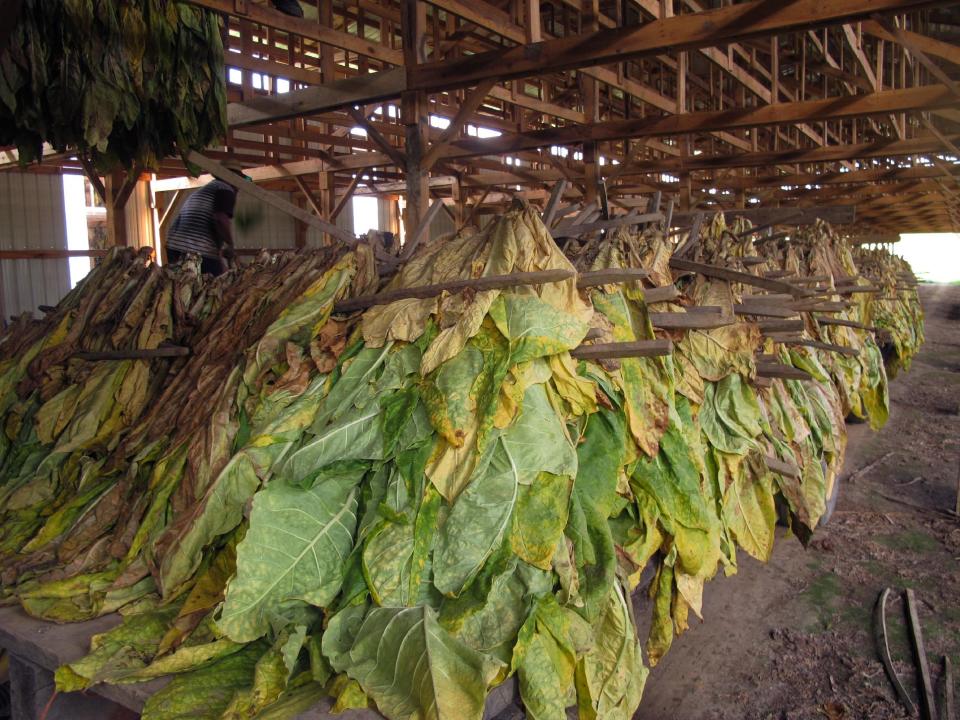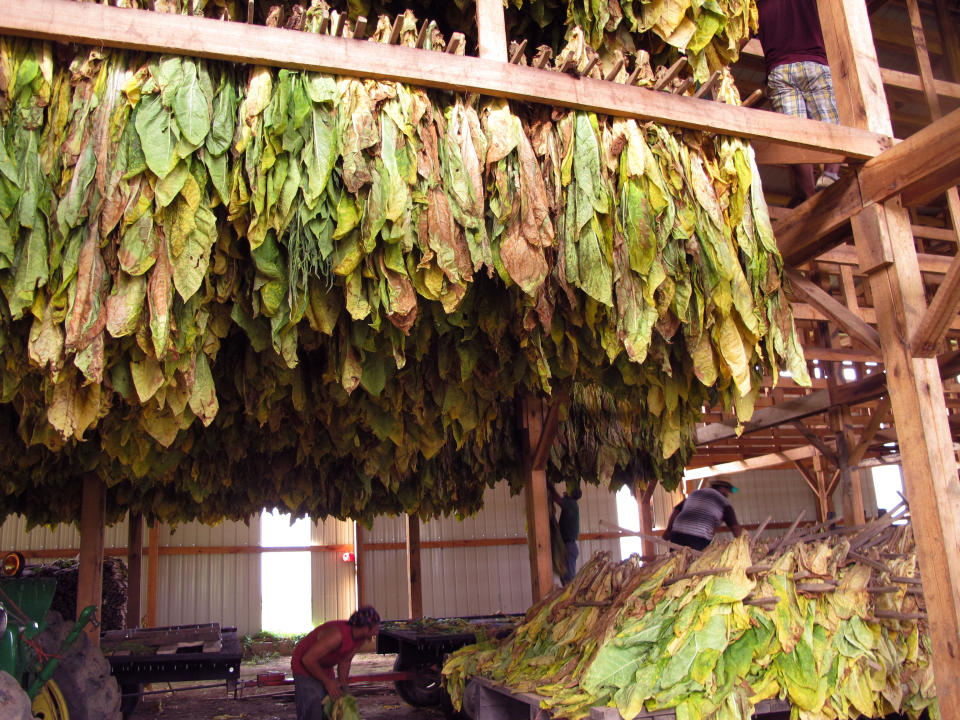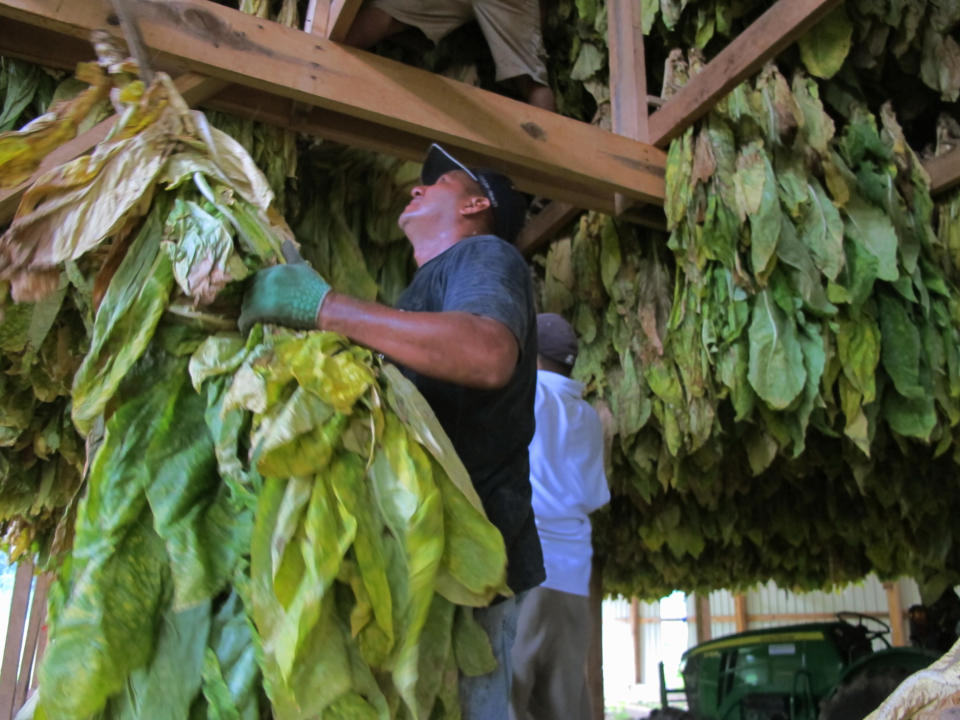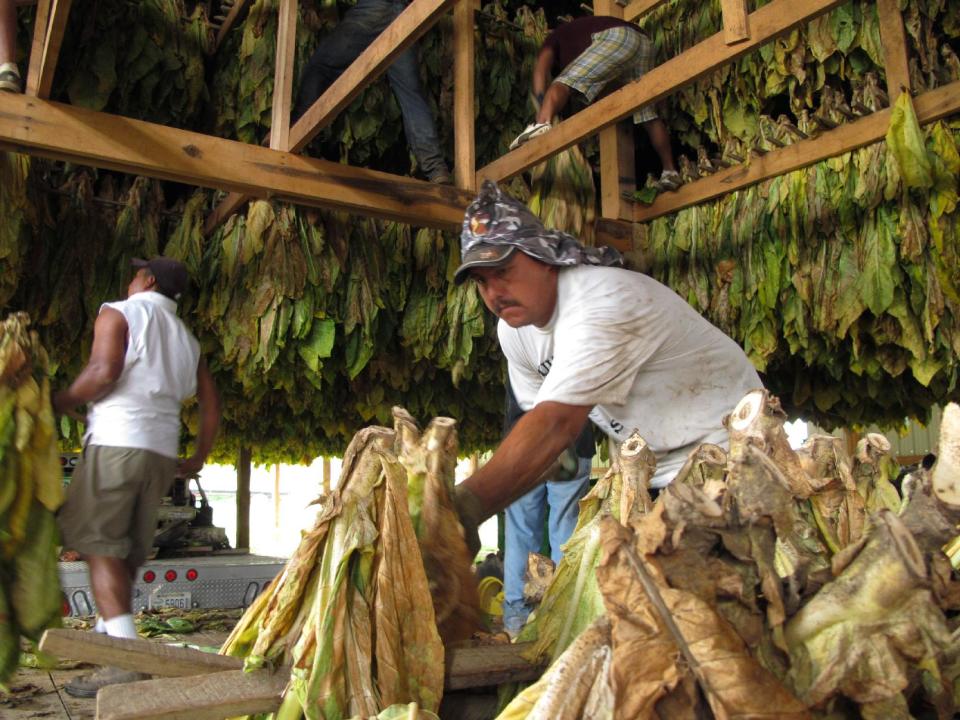Burley crop shows growth spurt after timely rains
FINCHVILLE, Ky. (AP) — For burley tobacco farmers in Kentucky and Tennessee, forecasts for a close-to-average yield are coming as a big relief after sweating through prospects of a paltry harvest as extreme heat and a dry spell stunted the crop's growth for much of the season.
Tobacco showed its toughness after timely rains spurred a late-season spurt for much of the crop. In a matter of weeks, some knee-high burley sprouted to shoulder length. The added weight of the tobacco leaves figures to help fatten paychecks for farmers at markets that open late in the year.
Farmers are just starting to harvest the burley crop, which is used in cigarettes. It's a turnaround that never materialized for much of Kentucky's corn crop, which was irreparably damaged by hot, dry weather.
"In July when it was 106 degrees, I was really wondering if we would harvest half of this tobacco," farmer Doug Langley said Thursday while his farmhands stacked long sticks of green-leafed burley in a barn near the rural Kentucky town of Finchville in Shelby County.
"And then we got some rains. ... The old timers say just don't give up on a tobacco crop. It'll grow out. And they were exactly right. Just take care of the crop, do the best you can with it and it paid off this year."
Now, Langley is hoping to squeeze a profit from his burley, unlike his corn crop, which he calls his worst ever. Langley, who farms in Shelby, Henry and Spencer counties, predicted half his 3,500-acre corn crop won't produce 50 bushels an acre, which amounts to one-third of his usual corn yield.
Kentucky is the nation's top burley producer. The state's average yield could come in around 2,000 pounds per acre, just below the yearly average, said University of Kentucky tobacco specialist Bob Pearce.
Carol Hinton, the agricultural extension agent in Breckinridge County, said much of the burley was revived by timely rains. She predicted yields slightly above average in the western Kentucky county.
"The condition of the crop is better than we expected," she said. "Not like the corn crop."
Corn farmers there are bracing for paltry yields that could drop the countywide average to 25 bushels an acre or lower when factoring in fields that were a total loss, Hinton said.
Paul Denton, a tobacco specialist with UK and the University of Tennessee, said the Tennessee crop might be in slightly better shape than in Kentucky. But he said recent flash flooding in the Johnson City area could hurt some of the northeastern Tennessee crop.
But across wide swaths of both states, a burley crop that once seemed on the brink of ruin now could turn out average, Denton said.
"It's not something you usually see headlines about, but it looked like a disaster four weeks ago," he said.
The market outlook for the crop also could be on the upswing.
Worldwide burley production is down and U.S. burley exports are up this year in response to a better 2011 crop and limited world supplies, said UK agricultural economist Will Snell.
With a decent curing season, this year's burley crop could fetch prices averaging in the low- to mid-$1.80s per pound range, compared to $1.75 per pound a year ago, Snell said.
Burley is mostly grown under production contracts between farmers and tobacco companies. Those agreements allow buyers to reject leaf that doesn't meet quality specifications.
Meanwhile, yields will likely be down slightly for dark tobacco grown in western Kentucky, said Andy Bailey, a dark tobacco extension specialist for UK and UT. That region was hardest hit by the summer dry spell, but irrigation kept much of the dark tobacco going, he said.
Tennessee's dark tobacco crop has fared better, due to more rainfall, he said.
The crop is used for smokeless tobacco products.
Last month, government forecasters said Kentucky farmers planted an estimated 71,000 acres of burley tobacco, up 7,000 acres from 2011. U.S. tobacco production has fallen sharply since the 2004 tobacco buyout, which ushered in a free-market system to replace a Depression-era price support program.
But for some farmers, tobacco has become an even bigger enterprise since the buyout.
Langley planted 250 acres of burley this year — his biggest crop since getting into farming in 1986. How his crop fared depends on when it went in the ground. The earliest-planted burley struggled most. His mid-season leaf looks good, and the latest-planted burley has potential but needs more rain, he said.
He's predicting an overall burley yield of about 2,000 pounds an acre, off about 500 pounds from his usual average but enough to make a profit.
The quality of his leaf will depend on the curing season. Ideally, the post-harvest curing process slowly changes long green burley tobacco leaves to a dark reddish brown tint desired by buyers.
But a dry curing season can produce a yellowish tint to leaves, which buyers are prone to pick over.
"The curing season is everything for us," Langley said.





